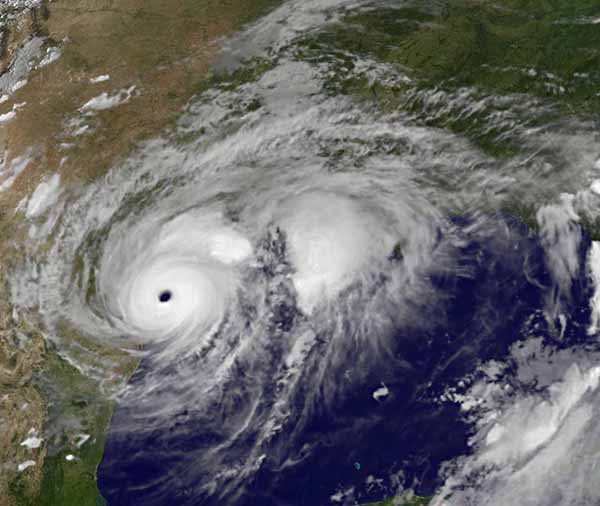Hurricane Harvey made landfall near the middle of the Texas Gulf Coast on August 25, 2017 as a Category 4 storm on the Saffir-Simpson Hurricane Wind Scale and essentially hovered over the region for seven days, unleashing heavy rain and causing catastrophic flooding. To call Harvey an extreme weather event would be an understatement. It was a monster storm stuck between two high-pressure systems and moving slower than 3.2 kilometers per hour (2 miles per hour). On August 31, Harvey started advancing northeastward and was downgraded to a tropical depression. See also: Air pressure; Cyclone; Extreme weather events; Gulf of Mexico; Hurricane; Tropical meteorology

By the time Harvey had moved on, flooding extended from Corpus Christi, Texas, in the southeast through southwest Louisiana, with Houston, Texas, situated roughly in the middle. By September 4, a total of 60 storm-related deaths had been reported and an estimated 50,000 homes had been damaged or destroyed. Record rainfall was measured from Houston to Port Arthur, Texas, to the east, with Cedar Bayou, Texas, located about 30 miles east of Houston, receiving the highest rainfall total of 132 centimeters (52 inches).
The strength of the storm was likely a combination of natural variability and human-influenced ocean warming. The Atlantic Multidecadal Oscillation (AMO) is a climate cycle in the North Atlantic that alternates between warm and cool phases. In the warm phase (the current phase), sea-surface temperatures are higher and the chance of tropical storms becoming severe is greater. At the same time, ocean warming is also known to have an anthropogenic component. Warmer oceans are generally believed to increase the intensity of hurricanes. The extent of flooding was also a result of natural and human causes. The Gulf coast of Texas is flat and has nonporous, clay soil, making it naturally prone to flooding and slow for water to drain or run off. In addition, the built environment around Houston covers natural drainage features, such as wetlands and prairies. Inadequate stormwater management increased Houston’s flooding vulnerability. The cost of Hurricane Harvey is expected to exceed $100 billion. See also: Civil engineering; Environmental geology; Floodplain; Grassland ecosystem; Land-use planning; Ocean warming; Wetlands





